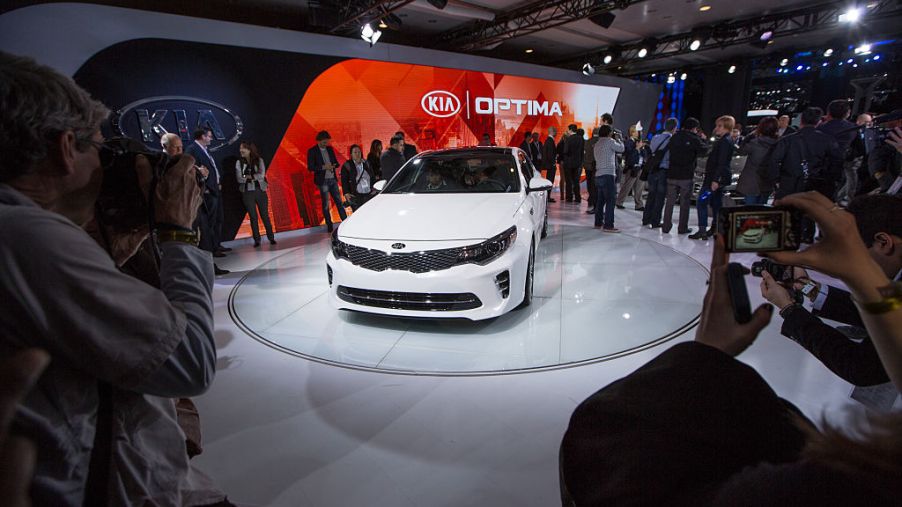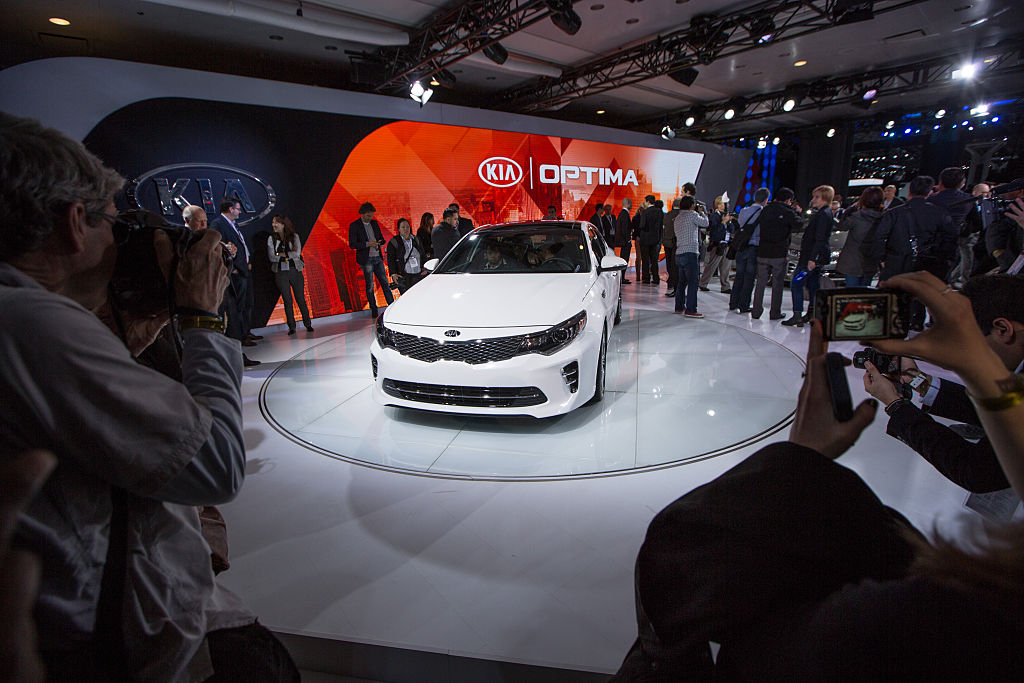
Why the 2013 Kia Optima Is the Most Complained-About Model Year
Handsome styling, respectable fuel efficiency, and an affordable price all make the Kia Optima an appealing choice as a family driver. The Kia Optima competes with the Nissan Altima, Hyundai Sonata, and the Honda Accord in the midsize sedan category.
So maybe you’d like to save money by buying a secondhand Optima. But before you start shopping for one, you should know about the model year that’s the most complained about of them all. Read on to learn why CarComplaints.com says the 2013 Kia Optima has earned its questionable reputation.
The model year with the most complaints overall
Owners registered 897 complaints in 128 problem categories against the 2013 Kia Optima.
Over one-third of the problems were engine-related and many of these involved a blown engine. Many owners reported engine knocking and loss of power while they were driving. Almost half of these owners replaced their Optimas’ engines.
Car Complaints’ severity rating for this problem is “pretty bad.” It typically cost owners almost $5,000 to repair, and the average mileage at which it occurred was at 78,350 miles.
Some of the Kia Optima’s other engine problems, while fewer, were rated as “really awful.” They included engine oil sludge, the illumination of the check engine light, sputtering, and stuttering. In a number of cases, the solution to these problems was, again, to replace the Optima’s engine. The average mileage for these problems ranged from as little as 26,150 miles for stuttering up to 93,850 miles for the sputtering and loss of acceleration.
Owners asked for help from Kia dealerships but didn’t always get it. One dealership refused to replace the engine even though the car was still under powertrain warranty. Another told an owner that Kia Motors wouldn’t do anything about the problem until it received enough complaints about it. And the dealerships that were able to help could only replace the engine and charge owners for it.
Problems on a smaller scale than those tied to the engine for this model year included steering, body and paint, windows and windshields, and electrical systems.
Engine and steering problems also made the 2013 Kia Optima less safe
A whopping 250 complaints were submitted to the National Highway Traffic Safety Administration about the Kia Optima‘s engine safety. Even the hybrid version wasn’t immune to these problems. They occurred on average at just under 73,000 miles.
Several owners sent in frightening accounts of the engine stalling or losing power while driving on busy highways and city streets. Others told of the engine catching on fire and causing damage to the car’s front end and tires.
In almost all cases, the car had to be towed. Car Complaints gave this problem category the worst severity rating of “really awful.”
All told, NHTSA reported eight crashes, 44 fires, and 13 injuries that resulted from blown 2013 Optima engines. In March 2020, NHTSA issued a recall for the problem. The organization had already opened a defect investigation related to engine problems for the Kia Optima, Sorento, and Sportage for model years 2011 through 2014 back in 2017.
Steering problems, such as pulling to one side, sticking at highway speed, or clicking when the steering wheel is turned garnered 133 NHTSA complaints. The NHTSA recorded six crashes for this problem category and its severity rating is also “really awful.” The average mileage was depressingly low at 32,917 miles.
Other Kia Optima model years with fewer complaints

Due to all of the complaints associated with it, the 2013 Kia Optima is a car that you should avoid. The only model year that’s worse is the 2011 Optima, which is plagued by high problem severity and repair costs. As a rule of thumb, model years 2011 through 2014 are ones to stay clear of because of this Kia’s engine troubles.
But other Optima model years are far less troublesome. Engine and steering problems in model years 2016 to 2019 are rare, so keep them in mind when you’re shopping for a secondhand Kia Optima and you won’t go wrong.


